Fiction, Truth, and Female Genital Cutting: A reflection of the fireside chat with Farzana Doctor
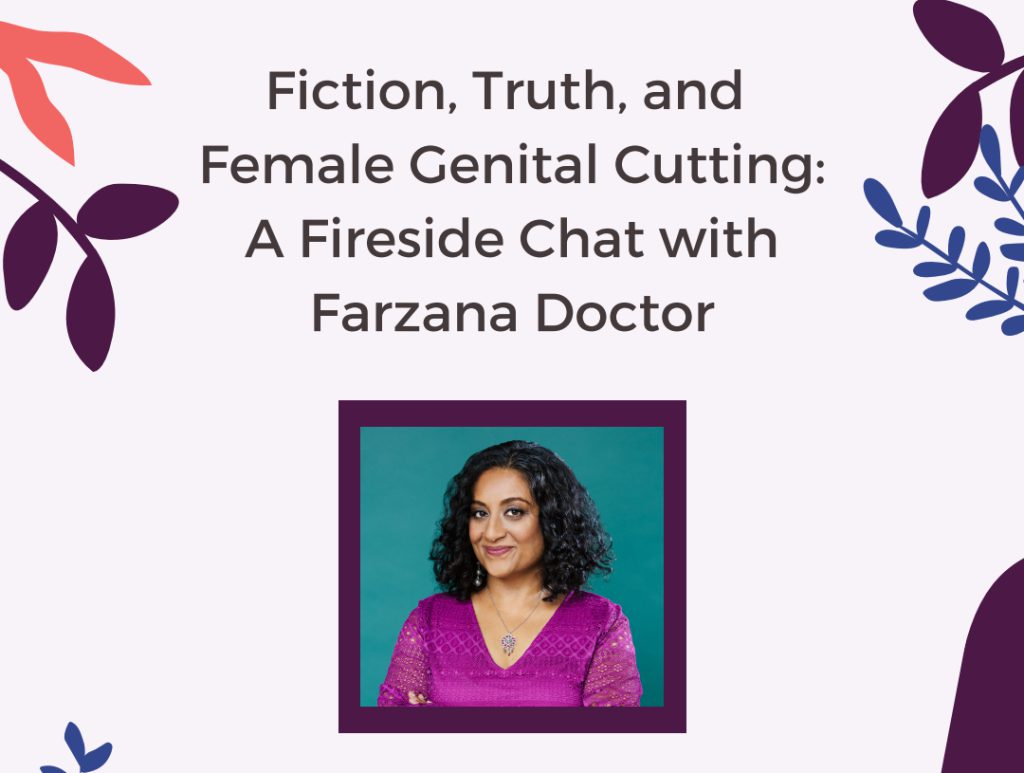
On October 4th, Sahiyo partnered with acclaimed Canadian author and WeSpeakOut cofounder Farzana Doctor to host Fiction, Truth, and Female Genital Cutting: A Fireside Chat. During this intimate conversation, we had the opportunity to hear from Doctor about her latest novel, Seven. Compelling and passionate, Seven follows the journey of Sharifa, a woman trying to better understand her past of having undergone female genital cutting (FGC) in order to move forward. The first of its kind, this novel takes an unflinching look into the reality of the fight to end FGC, or khatna, as it is known in the Dawoodi Bohra community. During the conversation with Mariya Taher, a co-founder of Sahiyo, Doctor explored how the book was influenced by her own family history and experiences, and the delicate line she had to walk while trying to discuss such a difficult topic. Particularly powerful was her explanation of how writing the book, and her activism in general, has helped shape her understanding of khatna. While Seven certainly condemns the practice, Doctor also works to show the complexities that come with practices like khatna, such as the fact that the perpetrators are sometimes victims of the practice, as well. While the book specifically looks at the practice of khatna, its overall message about the importance, albeit difficulty, of trying to end the cycles of shame and violence that burden women speaks to the reality of women everywhere. After the formal Q&A, the guests had the opportunity to ask Doctor questions about her writing process, activism, and to share their own experiences. While Farzana Doctor was the main speaker of the event, participation from all who attended was really what helped the chat flourish. The fireside chat proved not only to be an opportunity for guests to learn about Doctor’s work, but a chance for them to expand their community and share their experiences in the fight to end FGC globally. Attendees were from the United States, India, and Germany. From exploring the intricacies of sexuality, marriage, female friendship, cultural norms, and the ongoing fight to end khatna, Fiction, Truth, and FGC: A Fireside Chat with Farzana Doctor was an eye-opening and educational event. For those who were unable to attend, or would simply like to learn more about this event, the link to the event recording and transcript of the formal Q&A portion of this event is attached below. Listen to the formal Q&A portion of this event. Read the full transcript of the event. Purchase Seven via the following links: United States: bit.ly/orderSevenUS Canada: bit.ly/orderseven Audiobook: bit.ly/sevenaudiobook
Orchid Project releases report detailing the pandemic’s impact on female genital cutting
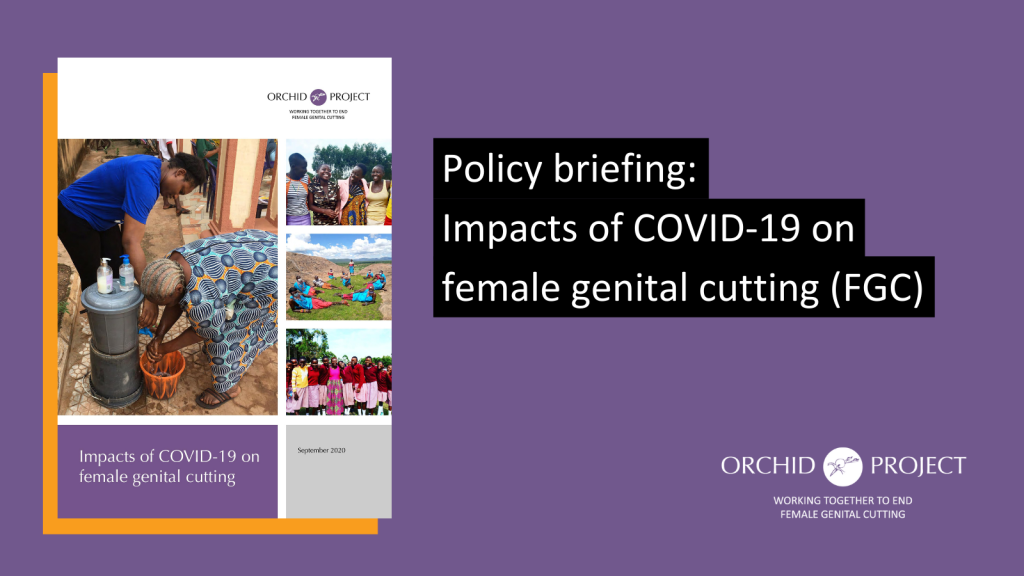
By Hunter Kessous Reports of an increasing rate of female genital cutting (FGC) began early in the pandemic. We are now nine months into the lockdowns and school closures, which have propagated the cutting of young girls. In response, the Orchid Project, decided to further investigate the impact of COVID-19 on the practice of FGC and the movement to end it. The Orchid Project is a nongovernmental organization based in the United Kingdom advocating for the end of FGC globally. Throughout the summer, various grassroots organizations and non-governmental organizations have hosted webinars elucidating the effects of COVID-19 on specific organizations. Sahiyo has shared blog posts reflecting on some of these webinars, which have focused on work in Nigeria and Kenya. There are some key pieces of information shared between these webinars and the Orchid Project’s reports. For example, COVID-19 induced lockdowns and school closures are creating opportunities for FGC to be performed undetected. When girls stay home, they are automatically at a greater risk of undergoing FGC. Furthermore, safe spaces, such as shelters and mental health services, have been closed down. Even medical attention is difficult for FGC survivors to receive, as resources have mainly been diverted to the pandemic. Lack of essential health services and safe spaces for girls and women is a serious concern. According to the report, “Resourcing and programming to end the practice in Asia are extremely limited, so the impact of the COVID-19 pandemic on activities to end FGC have been less significant than in West and East Africa.” The report gives an alarming account of how economic hardship caused by the pandemic has also led to an increase in FGC. In some communities, girls who have been cut are often seen as more marriageable and receive higher bride prices. The bride prices can then be exchanged for food and essential supplies, which has motivated families to cut their girls in this time of extreme economic hardship. Another economic factor involves former cutters who have been returning to the practice, in need of the compensation it will provide. In addition to affecting the practice of FGC, there have also been drastic effects on the movement to end FGC. Nearly all of the groups that were interviewed by Orchid Project for the report have experienced severe restrictions on programming due to stay-at-home and distancing orders. Many organizations have responded by shifting their programming to virtual and media-based formats. However, this is not without its own challenges. Unequal access to technology and internet, along with the often high prices of radio and television communication, have been major obstacles to continuing community dialogues about FGC. The greatest need that the grassroots organizations are currently facing is urgent, flexible emergency funding. This is not to say that the grassroots organizations have not adapted to the dilemmas created by COVID-19. There have been many creative approaches to continuing their important work. Some in-person programming has continued with social distancing and the use of personal protective equipment. WhatsApp and social media platforms are being used to share key information, stimulate dialogues, and share podcasts. Hotlines have been created for at-risk girls; and some activists are even housing these girls in their own homes. The movement to end FGC has certainly taken a hit, but it is not without hope, thanks to the ingenuity and dedication of grassroots activists worldwide. Read the full report by the Orchid Project.
Annual Reports
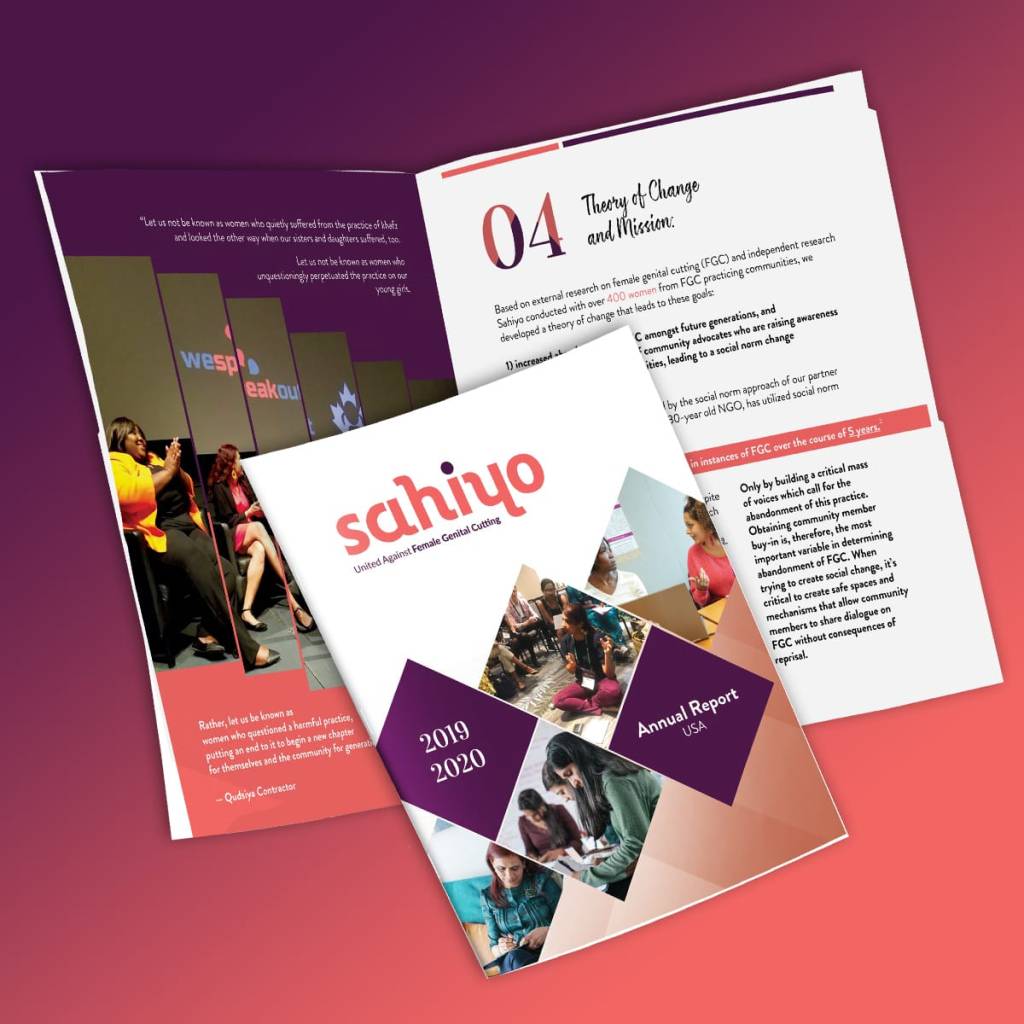
Annual Report: Sahiyo U.S: June 2019-June 2020 Throughout this past year, our programs have expanded to support larger numbers of women impacted by female genital cutting. Our Voices to End FGM/C project alone saw the creation of 37 new original digital stories stories. Running since 2017, the program involves survivors coming together to heal from their FGC experiences and create their advocacy videos. The program has received sizable number of participants from a diverse range of countries including the United States, India, Singapore and Zimbabwe.#MenToEndFGC, our Male Ally campaign is another one of our success stories from the past year. The campaign encouraged over 40 men across the globe – from Ghana and Kenya to multiple regions of India and the United States- to share stories via our various digital storytelling platforms about how FGC had impacted the women in their lives, including their wives, daughters, sisters, or female friends. Each participant made it clear that they were in ally in ensuring FGC ended for girls and women worldwide. All our work could not be completed without the wonderful support of our volunteers. And in this past year, we’ve grown our volunteer program by 70%, with 50 volunteers from over 9 countries. To learn more about our vital work this past year, please take some time to read the Annual Report. Thank you for being part of our journey.
From Saving Safa to Seven: How authors use writing to shed light on FGC
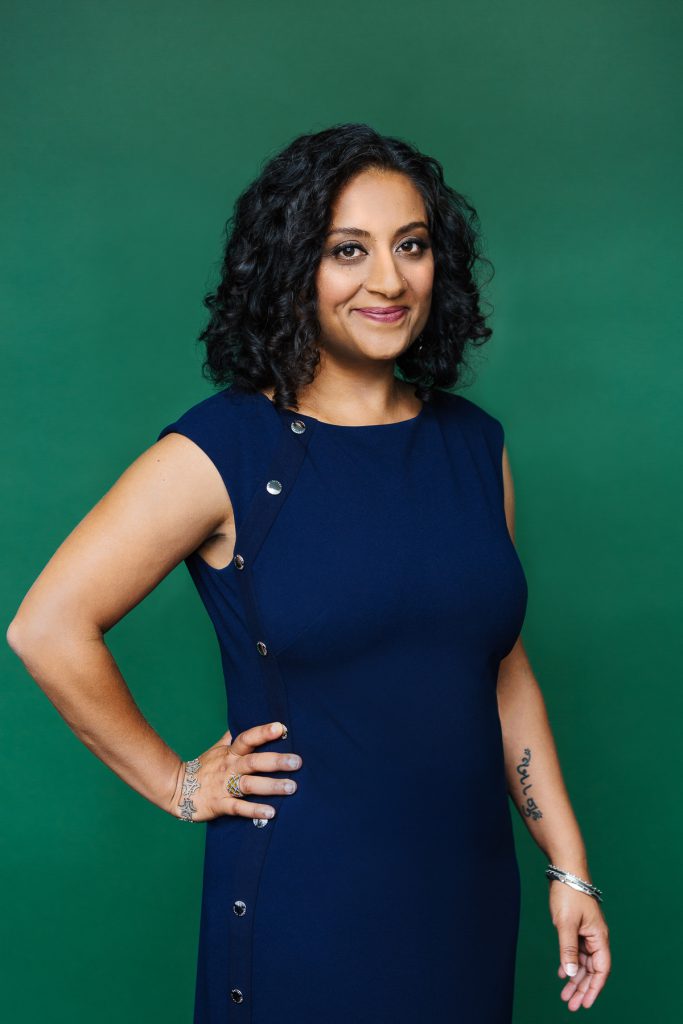
By Cate Cox “Without our work, the issue would quickly be swept under the carpet — and so we carry on.” —Waris Dirie, Saving Safa It wasn’t until my first year at university before I was asked to critically engage with the issue of female genital cutting (FGC). Up until then what I knew about FGC I knew from overheard conversations between my parents and their colleagues, from snippets of news briefs and CNN articles that flashed across my computer screen. If you’d asked me to name an activist working to end FGC, my answer would have been something along the lines of someone working with the United Nations. Yet when I saw Waris Dirie’s novel, Saving Safa, on the reading list for my leadership class, I immediately recognized it. The young, but strong face of Safa having become almost synonymous with the global fight to end FGC. I knew her face, yet I didn’t know her story. As much as I agreed that the practice of FGC ought to end, I’d never been asked, or asked myself, to sit down and engage with the stories and lessons of the actual activists on the front lines working to end it. As I made my way through Dirie’s critically acclaimed sixth novel, I began to understand how little I understood. I realized how much my perception of FGC had been shaped by the position of an outsider looking in, instead of as a listener. We only spent two weeks in my class covering Saving Safa, but they are two weeks for which I am extremely grateful. Reading Saving Safa helped expand my understanding of FGC, the communities who practice it, and the challenges faced by people trying to end it. This 276-page book, not written for doctors or scholars or researchers, but accessible to ordinary people like me, had managed to change my world view in a mere two weeks. The success of Dirie’s many novels about this subject highlights the power of writing, and storytelling in general, as a weapon to encourage the abandonment of FGC. Writing allows people a glimpse into the thoughts and feelings of the communities that practice it. It allows us an accessible way to understand the issues and complexities of ending the practice. Most importantly, it brings to light the stories of such an often overlooked and ignored practice. Writing also has the power to allow survivors to see their own stories reflected, and gives both the author and the reader a space to heal. But the legacy of FGC and writing doesn’t end with Dirie. New and emerging writers are taking the torch to use writing to help shift the narratives around FGC. One of those writers is Farzana Doctor, author of the upcoming novel, Seven. In her novel, Doctor follows the story of Sharifa and the unrest that is gripping the Dawoodi-Bohra community as activists grow louder in their fight to end the practice of khatna or FGC. Doctor’s writing never shies away from highlighting the complications and difficulties that come with trying to end the practice. These reviews shine a light on Doctor’s intentions for Seven: “In her grand tradition, Farzana Doctor once again pushes us forward with nuanced, layered, inter-generational prose, to bring visibility to an important social issue. An urgent and passionate read.”—Vivek Shraya, author of I’m Afraid of Men and The Subtweet “Seven is an intimate, gutsy feminist novel that exposes the lasting, individual impacts of making women’s bodies fodder for displays of religious obeisance.”—Michelle Anne Schingler, FOREWORD Reviews These reviews summarize the value that writing has in education and advocacy around FGC. The work of Doctor, and other authors like her, is helping to continue to push against the boundaries of silence that keep this practice so often trapped in the shadows. She is fighting to continue the tradition started so many years ago by Dirie in using writing to shed light on the topic of FGC. Doctor will speak about her work and activism at the Sahiyo webinar, Moving Towards Sexual Pleasure and Emotional Healing After FGC, on October 22nd, at 12 noon. Expert panelists Joanna Vergoth and Sarian Karim-Kamara will shed light on these subjects using their professional and personal experiences. Register for this event today: https://bit.ly/HealingAfterFGC The event is co-sponsored by Sahiyo, WeSpeakOut, The End FGM/C Canada Network, forma, and Keep the Drums Lose the Knife. For those interested in learning more about FGC, you can purchase a copy of Seven through the links below or bookstores: Re US: bit.ly/orderSevenUS Canada: bit.ly/orderseven Audiobook: bit.ly/sevenaudiobook
Research study explores female genital cutting
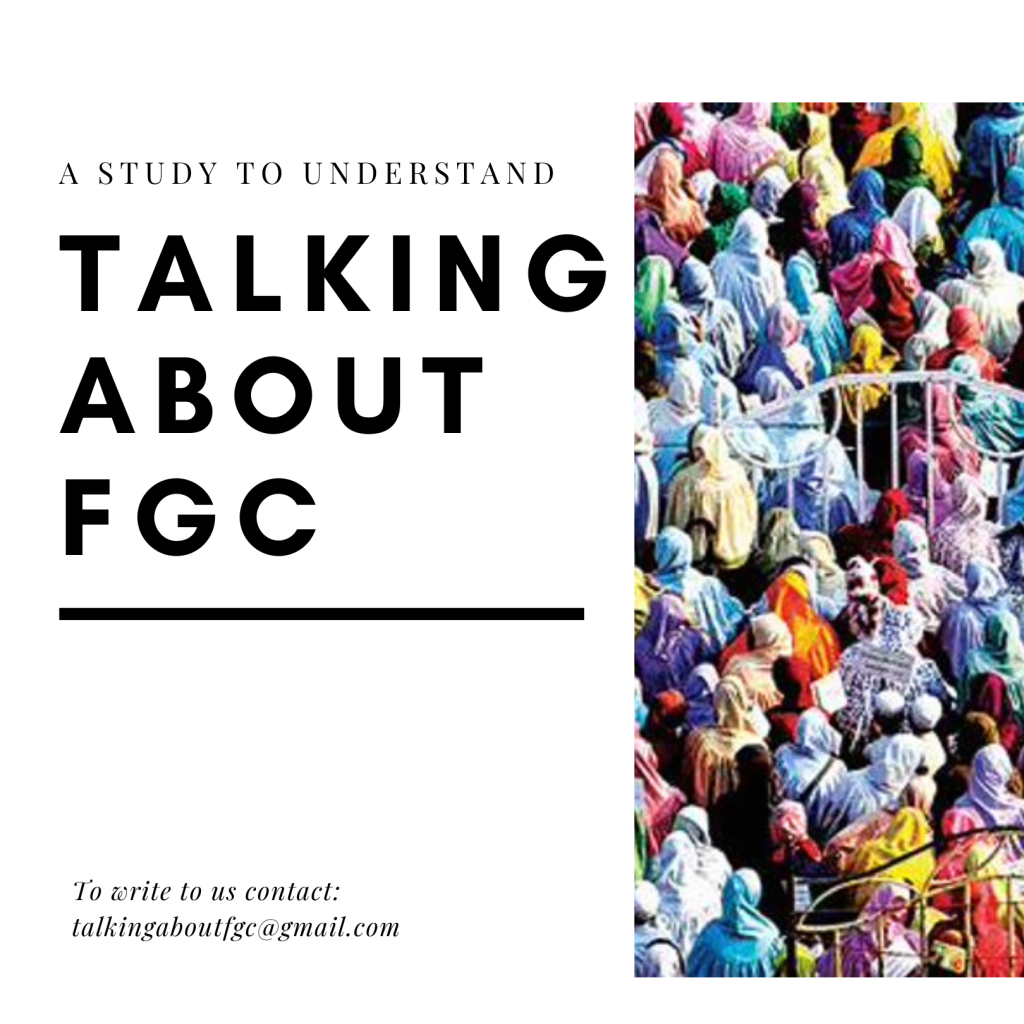
“Talking about Female Genital Cutting (FGC): A Study” is a research study undertaken to explore the way communities talk about FGC, the challenges of having such conversations, and the attitudes toward movements and campaigns on FGC. The study is authored by Reetika Revathy Subramanian and funded by Grand Challenges Canada. The project has been led by Vasavya Mahila Mandali from 2019-20 in association with Sahiyo India. This multi-disciplinary study investigates communication attitudes and challenges for having a conversation/s on khatna or FGC. It adopts a mixed-methods approach using an in-depth qualitative survey and feminist focus group discussions, both anchored online, to explore the links between the need for privacy and feminist-led advocacy in the existing public conversations and contestations on the practice of FGC in India and globally. The findings of the research seek to explore a connection between the need for privacy and feminist-led digital-safe spaces. The survey questionnaire for this study is open to all Bohras above 18 years of age, and it is available in three languages: Take the survey in English. Take the survey in Gujarati. Take the survey in Hindi.
Sleeping researchers and lack of data on female genital cutting in Pakistan

By Huda Syyed Two decades ago, I flipped through Reader’s Digest to distract my mind from schoolwork and the sweltering summer heat of Pakistan. My eyes glanced at the brief excerpt displayed mid-page with a glossy picture of a famous Somalian model, Waris Dirie. She exuded a sense of resilience, and I knew there was a meaningful story behind this woman. I was immersed in the daunting narrative of how she was blindfolded by her own mother to be cut. The pain was physically traumatizing, and she passed out. By the age of thirteen, Waris Dirie was coaxed by her father into the idea of an arranged marriage to an older man. Her dismay toward this proposal culminated into a desire to run away from home. She eventually found her way to London as a model. She still carried the realization that female genital cutting (FGC) extended beyond physical invasion, and resulted in health complications and deaths for many girls in Somalia. This encouraged her to become an activist, and she has dedicated herself to ending FGC. As I grew older and gravitated toward research and data collection, I found an article that mentioned FGC being practised in Pakistan. I was determined to gather contemporary data and historical understanding on it. Upon further readings, it became clear that FGC was a secretive practice in Pakistan in the Dawoodi Bohra community. A collective discernment of these realities pushed me to dig deeper and write a research paper that explored this practice and its socio-sexual effects. Apart from a few newspaper articles about FGC, there was not much information. It happens, but nobody talks about it. People from other communities are usually unaware that khatna is practiced in Pakistan. I was met with reactions of disbelief when I had discussions about it with non-members of the Dawoodi Bohra community. Sahiyo was one of the few reliable sources that recorded important data regarding FGC practices within the South Asian region (it also included Pakistan). Sahiyo focused on creating a culture of dialogue to uncover this practice; they also recorded numerical data, which could be helpful in tracing the frequency and historical context of FGC. Cutting is discreetly performed in residential spaces and not usually practised in conventional medical environments in Pakistan. Sahiyo surveys revealed this piece of significant information, which I later correlated with my own qualitative data. The interviews I conducted with a few participants in Karachi revealed that most of the young girls were cut at secluded spots inside a home, where some woman is well-versed with the physical practice of genital cutting. My main point of emphasis is that there is minimal research data on FGC in Pakistan, understandably so, because minority communities feel threatened or shamed for their cultural practices. Minorities in Pakistan have faced prejudice and threats in the past; hence, the need for cultural sensitivity while addressing FGC is imperative. Moreover, Pakistani society follows a patriarchal mindset, where female genitals or sex are uncomfortable topics to discuss publicly. This makes it challenging to have verbal discourse for the acquisition of qualitative data, because many women feel FGC should remain a secret. The lack of credible statistical data in Pakistan makes it difficult to track the frequency of FGC in contemporary culture. It is important to collect more data on FGC in Pakistan so it can be correlated with the socio-economic conditions, family set-up and religious leanings of young girls and women. Information of this sort could allow for a deeper understanding of bodily autonomy and factors that are more likely to foster a mutual respect for their bodies and its protection. There is a dire need for dialogue and engagement with the Dawoodi Bohra community from a culturally respectful distance. It is important for their community to feel unharmed and safe because this approach could lead to meaningful qualitative data that could help everyone understand the near permanence of FGC. Interviews, verbal discourse, and discussions are a gateway to accessing the historical, emotional, and psychological attachment of community members to this physically invasive practice. One of my interview participants expressed that FGC was a way of ensuring that a woman does not stray from her husband (possibly due to decreased sexual desire or libido response), and she did not see it as a harmful act. Keeping in mind such sentiments, it is vital to bridge the insider versus outsider dynamic by listening, recording, and preserving the anonymity of data respondents. If young girls and women in the Dawoodi Bohra community of Pakistan feel comfortable and secure discussing this topic with outsiders of the community, there will be more possibility of gathering useful data that could be utilized in creating support groups and spaces for those that have experienced physical or psychological strain or trauma due to cutting. Finding participants for qualitative data collection was a tedious task because very few women were willing to speak about this. Even within one community, there are those that deem FGC as a problematic practice; but there are also those that associate religious and cultural significance with it. Researchers must take a softer approach that refrains from shaming the community for ancestral practices. The objective should be to safely record community narratives and observe their historical reasoning for FGC, so that long-term solutions can be sought that diplomatically create safe options and spaces for young girls to celebrate the freedom of bodily autonomy.
SEVEN, the first novel of its kind to address female genital cutting in the Bohra community, releases this month
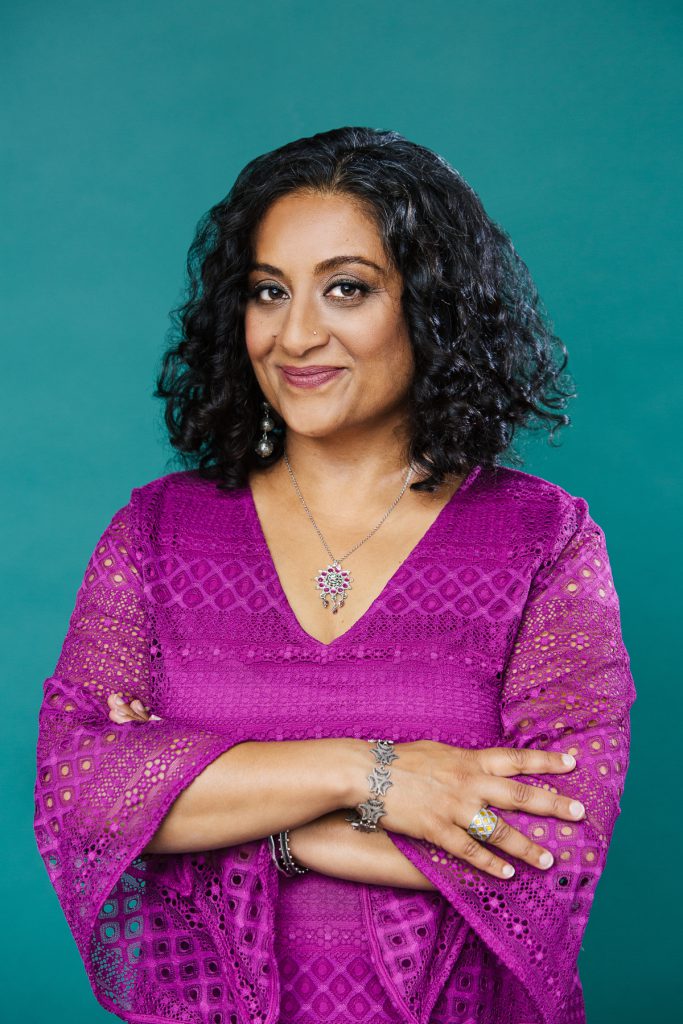
SEVEN is being released in North America this September (Sept 5 Canada/Sept 29 U.S.). The novel sensitively addresses women’s relationships, sexuality, infidelity, intergenerational violence, religion and healing sexual trauma within the context of the Dawoodi Bohra (sub-sect of Shia Islam) community. This is the first novel of its kind to address female genital cutting in the Bohra community. Farzana is an engaging speaker on all of the above themes and issues. About SEVEN: When Sharifa accompanies her husband on a marriage-saving trip to India, she thinks that she’s going to research her great-great-grandfather, a wealthy business leader and philanthropist. What captures her imagination is not his rags-to-riches story, but the mystery of his four wives, missing from the family lore. She ends up excavating much more than she imagined. 2016 is a time of unrest within her insular and conservative religious community, and there is no escaping its politics. A group of feminists is speaking out against khatna, an age-old ritual they insist is female genital cutting. Sharifa’s two favourite cousins are on opposite sides of the debate and she seeks a middle ground. As the issue heats up, Sharifa discovers an unexpected truth and is forced take a position. In an era of #MeToo, Doctor brings us a soulfully written book about inheritance and resistance. Sahiyo is giving away a copy of SEVEN to a lucky recipient! Sign up for our newsletter to find out how! About the author: Farzana Doctor is an award-winning writer, activist, and psychotherapist. She is the author of four novels: Stealing Nasreen, Six Metres of Pavement, All Inclusive, and the forthcoming Seven. Farzana was recently named one of CBC Books’ “100 Writers in Canada You Need To Know Now.” She is a founding member of WeSpeakOut. SEVEN has already received excellent advance praise: “A brave and beautiful novel.”—Judy Rebick, author of Heroes in My Head “Seven is an intimate, gutsy feminist novel that exposes the lasting, individual impacts of making women’s bodies fodder for displays of religious obeisance.”—Michelle Anne Schingler, FOREWORD Reviews “Penetrating and subtle, SEVEN deftly explores loyalty in changing times, what it means and what you give up to be a part of a community, a marriage, and friendships. Sharifa is a sympathetic everywoman; her relationships fully realized and deeply felt in this immersive, absorbing portrait.”—Eden Robinson, author of Son of a Trickster and Trickster Drift. “A defiant and engrossing novel.”—Sarah Schulman, author of Conflict is Not Abuse. “In her grand tradition, Farzana Doctor once again pushes us forward with nuanced, layered, inter-generational prose, to bring visibility to an important social issue. An urgent and passionate read.”—Vivek Shraya, author of I’m Afraid of Men and The Subtweet Sign up for Sahiyo’s newsletter to win a copy of SEVEN!
Population Council hosts webinar to discuss ending female genital cutting

By Hunter Kessous The Population Council hosted a fascinating webinar, Using Research to Understand and Accelerate The Abandonment of Female Genital Mutilation/Cutting (FGM/C). It was the second of two webinars from a series titled, Evidence to End FGM/C: Research to Help Girls and Women Thrive. The most recent webinar reported some of the findings of a research consortium that began in 2015 and culminated this year. The research spanned eight countries and concluded with how initiatives to end FGM/C may be optimized. Speakers included Bettina Shell-Duncan, University of Washington (moderator); Nada Wahba, Population Council, Egypt; Dennis Matanda, Population Council, Kenya; P. Stanley Yoder, medical anthropologist; and Nafissatou J. Diop, UNFPA. Dr. Matanda spoke on the use of data to inform programming. His research spanned Kenya, Nigeria, and Senegal, and sought to map hotspots for FGM/C. The data pinpointed the areas of each country in which FGM/C is most prevalent. Dr. Matanda’s findings also reveal how factors relating to a girl’s mother influence the likelihood that she will be cut. The results varied by region, but some of these factors included the mother’s ethnic group, her beliefs surrounding FGM/C, and if she herself was cut. The most important takeaway from Dr. Matanda’s research is that considering only national data masks local variations. He recommends linking regional data to subnational policies and efforts to prevent FGM/C from occuring to future generations of girls. Medical anthropologist Dr. Yoder responded to Dr. Matanda’s research, remarking that Kenya was the only country of the three where the level of education of the mother was found to have an effect on the risk of a girl being cut. He proposes modernization, the shift from traditional and rural to secular and urban, as an explanation for Dr. Matanda’s findings. I believe that Dr. Yoder’s theory illuminates a need for ongoing research on this subject that correlates the changes in Kenya’s social, economic, and political growth to changes in the continuation of FGM/C. Following Dr. Yoder’s analysis, Wahba presented her research on the intersection of FGM/C and gender in Egypt. Hers was a qualitative study with multiple intriguing findings. One discovery that I found especially important was that conflicted mothers have been turning to doctors to decide on their behalf whether or not their daughter should be cut. This could be a result of the increasing medicalization of FGM/C in Egypt. Another interesting finding was that if either one of the parents, whether it be the mother or the father, does not want their daughter to be cut, then she will not undergo FGM/C. While many programs working to end FGM/C target the mother as the decision maker, Wahba’s research clearly shows that mothers are not the only influential group. For this reason, more anti-FGM/C programs should shift their efforts to also educate fathers and doctors, particularly in regions with high rates of medicalization. Diop followed Wahba’s presentation to provide analysis of the research. Diop feels strongly that FGM/C is rooted in gender inequalities, yet not nearly enough programs acknowledge this fact. She claims many programs that address cutting are gender blind, focusing too much on the consequences of FGM/C in their approach rather than the root causes for why FGM/C continues in the first place. Diop’s comments were a strong call to action for all advocates to take a gender transformative approach in order to achieve abandonment of FGM/C. More information about this research project can be found here. The webinar can be viewed here.
Protecting the girl child: The need for an anti-FGM law in India
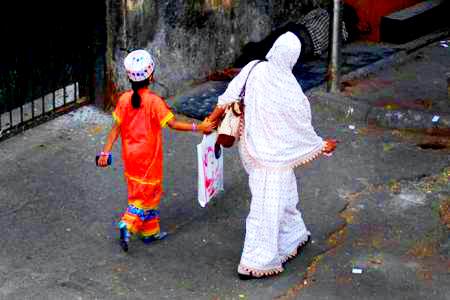
By Anjali Shah “Girls are not property. They have the right to determine their destiny.” – Anthony Lake, Former Executive Director, UNICEF Religious dogmas have gained focus with women coming forward to challenge the subversion and repression that they have been subjected to for decades. This has brought into the limelight the practice of female genital mutilation (FGM), which thrives in the shadows of our society with little recognition. It is the fear of social exclusion that has prevented women from lifting the veil of secrecy, resulting in more girls being victimized. Some women of the Bohra Muslim community, where FGM is widely practiced, have justified FGM to be their religious and cultural right. However, a practice that demands such standards of purity from girls and women so as to remove a part of their body to curb their sexuality raises important questions pertaining to their right to live with dignity, equality, bodily integrity, and also their right to freedom from inhumane treatment. It may be argued that FGM can be practised under Article 25 of the Constitution of India that guarantees the right to religious freedom. However, this is not an unfettered right but is subject to the constitutional restraints of public order, health and morality. The content of morality is founded on the four precepts emerging from the preamble, i.e., justice, liberty, equality and fraternity, which assures dignity for human life. The test of constitutional morality is to bow to these norms. FGM is a practise that reduces a girl child to chattel. It makes her right to live with dignity conditional upon actions beyond her control. Moreover, it is a practise which can cause life-long impairment, including difficulties with urination, kidney damage, infertility and psychological problems. Thus, taking into account the consequences of FGM on the life and well-being of a girl, FGM may not justify itself to be a practice validated on the basis of any religious tenet. While some people categorise FGM as discrimination against women, it is often the women of the community who are the perpetrators of this practice. It thus boils down to FGM being a facet of religion governed by individual belief. Autonomy is the premise for religious freedom and only stands legitimised when applied to one’s own choice to undergo FGM. It cannot be used as a blanket protection to permit actions, which can be categorised as a crime causing grievous hurt under the criminal statutes of the country. The Supreme Court of India has observed that depriving freedom to choose on the basis of faith is impermissible. Given that FGM is largely carried out on girls, who have little or no knowledge of the atrocity they are being subjected to, this results in an implicit denial or deprivation of the freedom to make a choice to undergo cutting. This appears to be in direct violation of Article 21 of the Constitution of India. The focus on elimination of FGM by international organizations has driven several countries to enforce laws against FGM. Sadly, in India, neither the political leaders nor the judiciary is playing its part to ban FGM. The Public Interest Litigation filed in 2017 before the Supreme Court of India to enact an anti-FGM law is still pending after being referred to a larger bench. Additionally, the Minister for Women and Child Development in 2017, who once sought a ban on FGM, later released a statement to say that there is no data in existence of FGM in India. From the surveys conducted on FGM in India, it is apparent that girls and women are willing to raise their voices against FGM, but are prevented many times from doing so due to the fear of expulsion from the community. To ensure effective support, a specific anti-FGM legislation is of utmost significance. Such a law may play an important role to instill fear in the minds of the people who allow FGM or are indifferent towards it. It may serve as a tool for community members to combat societal pressure in regard to FGM. An anti-FGM law may reinforce confidence among the girls and women to report cases of FGM. It may also help to put in place a mechanism for mandatory reporting of cases and also adequate protection measures. A strong political will is the key to end the practice of FGM in India. It is only when the political leaders are sensitised about the consequences of FGM to women and girls, that there may be a positive change towards enacting an anti-FGM legislation. The next key element will be the capacity building of lawyers, judges, police personnel, and social workers, who will be the driving force to identify and prevent cases of FGM in the country by systematic enforcement of laws and policies. However, one needs to be mindful that while a law may serve as adeterrent, the perpetrators are almost always mothers, grandmothers and other family members. Thus, the fight towards abolition of FGM requires a sensitised and a holistic approach. This includes awareness programmes that stress on the issue of FGM, framing comprehensive policies and guidelines and also education about the consequences of FGM to overcome religious barriers and give importance to human life. Finally, societal change also requires a strong opposition from the men in their roles as fathers, community leaders and husbands who many times in the past have had a passive role in encouraging FGM. If they were to make the decision to abandon the practice, it would have widespread impact and help shift the mindset around FGM, thus aid to abolish the practice. There is a need for a change in the way people think and perceive others and their rights. This change will allow breaking the barriers of the age-old customs and traditions that allow subjugation of women, and will aid in protecting the girl child.
Understanding the effect of COVID-19 on gender-based violence in Nigeria
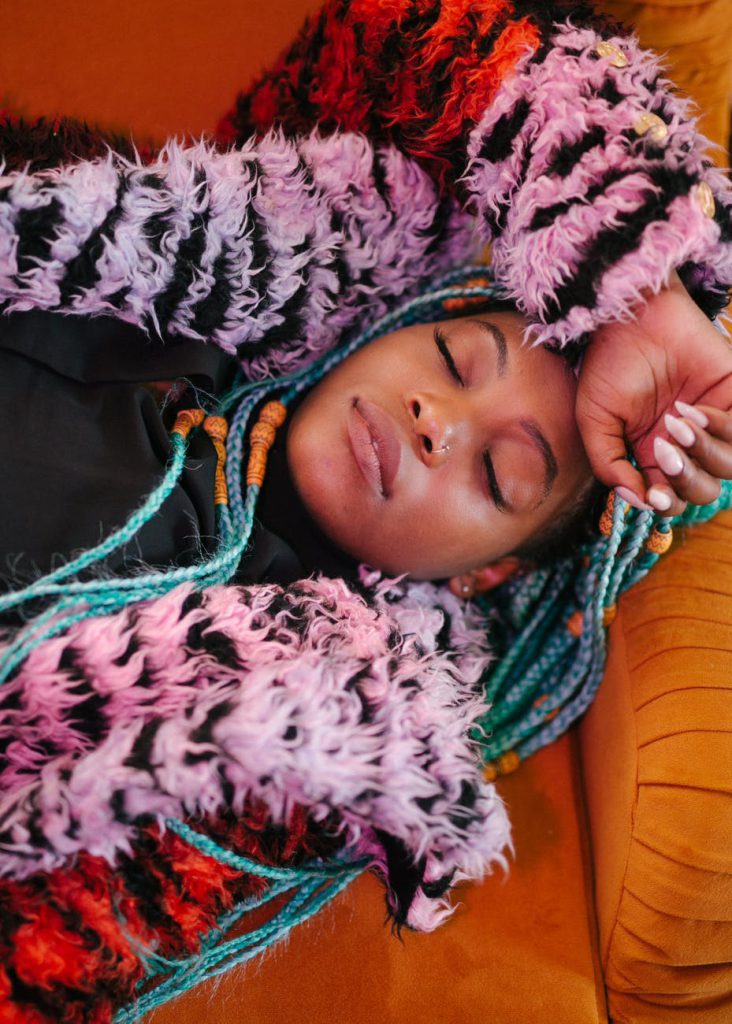
By Hunter Kessous In response to the COVID-19 pandemic, Hidden Scars and Magool have teamed up to offer biweekly webinars that amplify the voices of the grassroots organizations working to protect girls and women at this time. On June 9th, the third installment of the Africa Led Movement series addressed the effect of the pandemic on gender-based violence (GBV) in Nigeria, including female genital cutting (FGC). Co-hosts Bethel Tadesse of Hidden Scars and Leyla Hussein of Magool led with discussion questions. The three speakers were overflowing with passion and knowledge. It seemed to me they often found it difficult to focus their response on the specific question they were asked, as there was clearly an overwhelming amount of information they wanted to share. The fervent speakers included Clare Henshaw, Girls Inspired Africa and i-Safe Consulting; Hassana Umoru Maina, The ABCs of Sexual Violence Campaign; and Kolawole Olatosimi, Child and Youth Protection Foundation. One thing I learned in this webinar is that only in the West is FGC discussed as a separate issue from gender-based violence (GBV). For example, when I hear people talking about GBV, I would not assume they are including FGC in that definition. This might be because Americans and Europeans may be less familiar with FGC. Halfway through the webinar, I was confused why FGC had not been discussed yet. It was explained to me that they were including FGC in their definition of GBV. Other Americans and Europeans in the audience shared my “aha” moment. FGC is a form of gender-based violence, and I think Westerners should shift our viewpoint to that of the advocates in this webinar. Having attended a few webinars since the start of the pandemic, I have learned that COVID-19 has led to an increase in GBV. However, activists Hassana and Clare claim GBV has not increased; it is just being noticed more now that women and girls are stuck at home. Hassana says rape and violence against girls has been a pandemic for much longer than COVID-19. Kolawole noted that safe spaces have been taken from girls as a result of schools being closed in order to prevent the spread of COVID-19. A recurring theme throughout the interviews that all speakers addressed was the culture of silence that perpetuates GBV. Clare says that in order to end this culture, it is important that all of the NGOs in Nigeria work together. Apparently, there is a lack of coordination, and all organizations must “speak the same language with the same voice” in order to make change. Hassana posited making sexual violence part of the mainstream discussion so that the conversation is ongoing, as opposed to only mentioned when something bad happens. Another action item is promoting sexual education in all Nigerian schools. Finally, Kolowole explained that Nigeria has laws against GBV, but these laws need to be domesticated. At the current moment, these laws are not being enforced. The full recording of this webinar can be found here.
